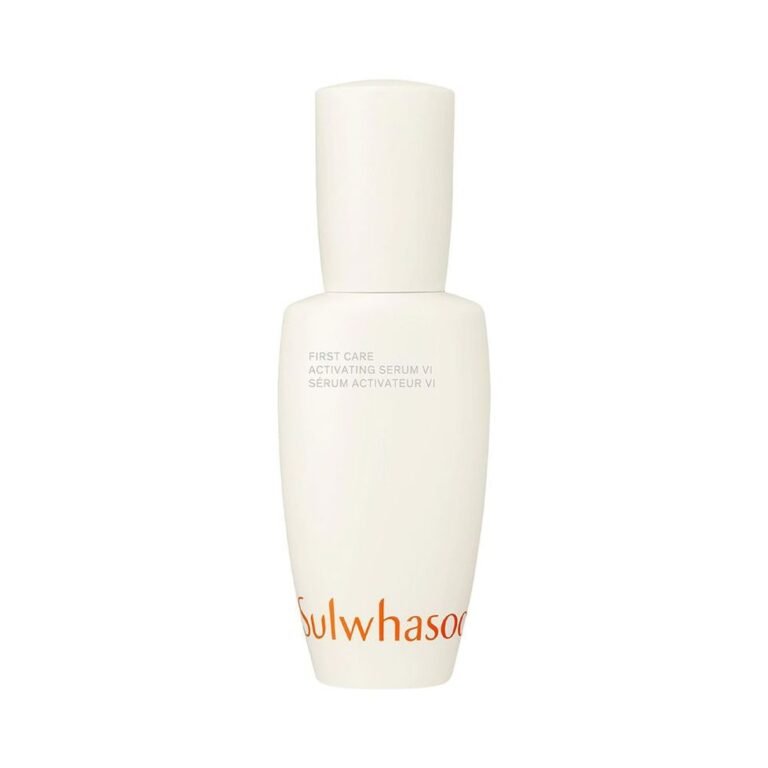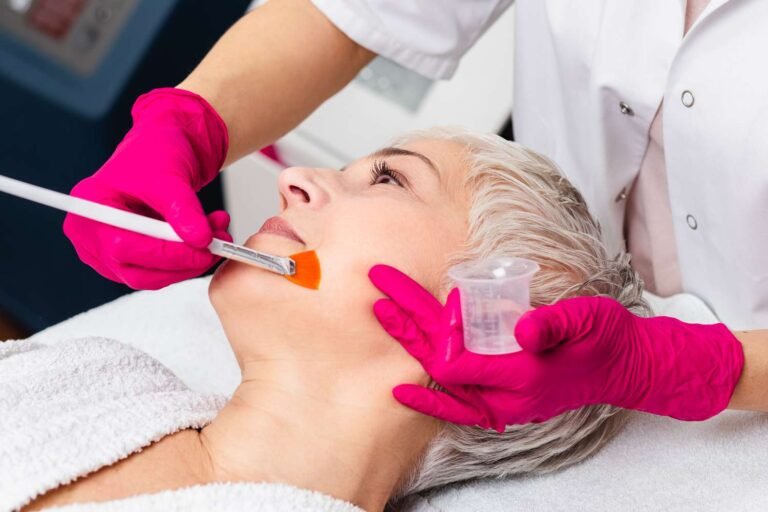5 Types of Acne Scars and How to Treat Them

Introduction
Acne scars are the lasting marks left behind after acne lesions heal. These imperfections on the skin can vary significantly in appearance and texture, depending on the severity of the original acne and how your body responds during the healing process. Understanding the different types of acne scars is crucial because each type requires a specific approach for effective treatment.
There are five main types of acne scars, each with its own unique features. Recognizing these differences can help you pursue targeted treatments that address your specific scar type, enhancing your chances for successful skin recovery. Knowledge about these scars also empowers you to set realistic expectations and make informed decisions about care options.
Treatment Options for Acne Scars
Treating acne scars involves various methods tailored to each scar type:
- Fillers and laser therapy for icepick scars
- Microneedling and topical creams for boxcar scars
- Subcision and microdermabrasion for rolling scars
- Steroid injections and cryotherapy for hypertrophic and keloid scars
Exploring these treatments can lead to smoother skin texture and improved appearance, boosting your confidence. Whether through professional dermatological procedures or home remedies, understanding your options is key to addressing acne scars effectively.
Understanding Acne Scars
Acne scars are the result of acne lesions that go deep into the skin, affecting its texture and appearance. When acne occurs, it causes inflammation that can lead to scarring. The body’s natural healing process involves an inflammatory response, but sometimes this can result in permanent scars.
How Acne Leads to Scarring:
- Inflammation: During an acne outbreak, pores become clogged with excess oil, dead skin cells, and bacteria, leading to inflamed lesions. Severe inflammation can damage the skin’s structure.
- Healing Response: As the body attempts to repair this damage, it produces collagen. If too little collagen is produced, indented scars form; if too much is produced, raised scars result.
Impact on Skin Texture and Appearance:
- Acne scars can leave the skin looking uneven and textured. Their presence affects not only the physical surface but can also influence one’s self-esteem and confidence.
- The type of scar formed depends on various factors such as the severity of the acne and individual healing responses.
Understanding these processes highlights why different treatment approaches are necessary for each scar type. Recognizing how inflammation and healing responses contribute to scar formation can guide effective treatments tailored to your specific needs.
1. Icepick Scars
Icepick scars are one of the most stubborn types of acne scars, often resulting from severe cystic acne. These scars have deep, narrow indentations that look like tiny puncture marks or V-shaped pits on the skin’s surface. Because they are deep and small, icepick scars can be difficult to treat, making them a long-lasting problem for many people.
Causes and Contributing Factors
Several factors contribute to the development of icepick scars:
- Severe Acne: Deep infections like cystic acne can damage the skin extensively, leading to such scarring.
- Inflammation: Intense inflammation during acne breakouts contributes significantly to scar formation.
- Delayed Treatment: Prolonged untreated acne increases the risk of deep scarring.
The psychological impact of living with icepick scars can be significant. Many people experience lower self-esteem and feel self-conscious about their appearance. This emotional burden emphasizes the need for effective treatments and support for those affected.
Treatment Options for Icepick Scars
Because of their specific characteristics, treating icepick scars requires targeted therapies. Some effective treatments include:
- Fillers: Temporary fillers can elevate depressed areas, providing a smoother skin surface.
- Laser Therapy: Fractional laser resurfacing stimulates collagen production, aiding in reducing scar depth.
- Chemical Peels: Strong chemical solutions exfoliate the outer layer of skin, promoting new skin growth that may improve scar appearance.
- Excision Therapy: This surgical method removes the scar tissue entirely and is often combined with suturing techniques for optimal results.
Each treatment option has its advantages and limitations. Consulting a dermatologist for an individualized treatment plan is crucial in determining the best approach based on your specific skin type and scar severity.
2. Boxcar Scars
What Are Boxcar Scars?
Boxcar scars are a unique type of acne scar that have broad depressions and well-defined edges. Unlike icepick scars, which are narrow and deep, boxcar scars create a more noticeable dent on the skin’s surface. They often look like the marks left by chickenpox, with their oval or round shape and steep sides.
How Boxcar Scars Differ from Other Types
The main difference between boxcar scars and other acne scars is their size and appearance:
- Icepick scars form deep, narrow pits.
- Boxcar scars are wider with sharper edges.
- Rolling scars have a wavy look with sloping edges.
Understanding these differences is important for choosing the right treatment.
Why Do Boxcar Scars Form?
Collagen destruction is a big factor in why boxcar scars form. When acne inflammation breaks down collagen fibers, it leads to tissue loss and creates these broad depressions. Other factors like genetics, how severe the acne was, and delaying treatment can also contribute to boxcar scars forming.
How to Treat Boxcar Scars
There are several treatments that can help reduce the appearance of boxcar scars:
- Laser Therapy: This method uses focused light beams to remove layers of damaged skin and stimulate collagen production.
- Microneedling: Tiny needles create micro-injuries in the skin to promote natural healing and collagen formation.
- Topical Creams: Some creams contain retinoids or glycolic acid to encourage cell turnover and improve scar texture over time.
Each treatment option has its own benefits depending on your skin type and how severe your scars are. It’s best to consult with a dermatologist who can give you personalized advice for your specific condition.
3. Rolling Scars
Rolling scars are a common type of acne scar characterized by their uneven surface and sloping edges. Unlike the sharply defined borders seen in boxcar scars, rolling scars create a wavy appearance on the skin, often making the texture appear rough or uneven. This type of scarring is typically more noticeable when light casts shadows across the skin, accentuating the rolling effect.
Formation Mechanism
The formation of rolling scars is primarily due to tissue damage beneath the skin’s surface. When acne heals, it can leave behind fibrous tissue bands that tether the skin to deeper structures. These bands pull on the epidermis, causing a rolling or undulating surface appearance. The degree of scarring depends on factors like the severity of the initial acne and individual healing responses.
Associated Skin Conditions
Rolling scars are often associated with chronic acne, particularly cases where inflammation was prolonged, leading to significant tissue destruction and subsequent scarring. Individuals with recurring bouts of cystic acne may be more prone to developing these types of scars due to repeated cycles of damage and healing.
Treatment Options for Rolling Scars
Addressing rolling scars involves various dermatological treatments aimed at releasing the fibrous bands and smoothing out the skin’s texture:
- Subcision: This procedure involves inserting a needle under the skin to break up the fibrous tissue that causes the depressed areas. It effectively lifts and smooths out irregular surfaces.
- Excision: In some cases, surgical removal of deeply tethered scar tissue is necessary. Excision helps improve skin texture by eliminating particularly stubborn areas of scarring.
- Microdermabrasion: A less invasive option that exfoliates the outer layer of skin, promoting new cell growth and improving overall texture. It’s particularly effective for mild to moderate rolling scars.
Each treatment option has its own set of benefits and potential side effects, making it important to consult with a dermatologist who can tailor a treatment plan based on your unique skin needs.
4. Hypertrophic Scars
Hypertrophic Scars are a type of raised scar that results from an overproduction of collagen during the healing process. These scars typically develop within the boundaries of the original wound and are characterized by their bumpy, elevated appearance. Unlike keloid scars, hypertrophic scars do not extend beyond the area of the initial injury, making them somewhat less challenging to treat.
Differences Between Hypertrophic and Keloid Scars
While both hypertrophic scars and keloid scars result from excessive collagen production, they differ in several key ways:
- Boundaries: Hypertrophic scars remain confined to the original wound site, whereas keloid scars can spread beyond these borders.
- Size and Shape: Keloid scars often grow into larger, irregular shapes compared to the more localized hypertrophic scars.
- Response to Treatment: Hypertrophic scars generally respond better to treatment than keloids, which tend to be more resistant.
Understanding these differences is crucial for determining an appropriate treatment strategy for each type.
Factors Contributing to Hypertrophic Scar Formation
Several factors can influence the development of hypertrophic scars:
- Genetic Predisposition: Individuals with a family history of scarring may be more susceptible.
- Wound Tension: Areas of high tension during healing can lead to more pronounced scarring.
- Infection or Repeated Trauma: Infections or repeated trauma during healing may exacerbate scar formation.
Treatment Options for Hypertrophic Scars
Effective management of hypertrophic scars often involves a combination of therapies:
- Steroid Injections: Corticosteroids can help reduce inflammation and flatten raised scars over time.
- Cryotherapy: This technique involves freezing the scar tissue with liquid nitrogen, which can shrink and soften the scar.
- Silicone Sheeting: Applying silicone sheets or gels can hydrate the scar tissue, leading to reduced height and improved texture.
Selecting the right treatment plan often requires consultation with a dermatologist who can tailor interventions based on individual needs and scar characteristics.
5. Keloid Scars
Keloid scars are a distinct type of scarring that present unique challenges in treatment. These scars are characterized by their raised, thick appearance and extend beyond the original boundaries of the acne lesion. Unlike hypertrophic scars, which remain confined to the site of injury, keloids can grow significantly larger than the initial wound, creating large scars that may cause discomfort or self-consciousness.
Genetic Predisposition and Risk Factors
Keloid formation is influenced by genetic factors, with individuals of African, Hispanic, or Asian descent being more prone to developing these large scars. Family history also plays a crucial role, as those with relatives who experience keloid scarring are at a higher risk. Other risk factors include:
- Age: Younger individuals tend to be more susceptible.
- Skin Type: Darker skin tones are more inclined to keloid formation.
- Location on Body: Areas such as the chest, shoulders, and earlobes are common sites for keloids.
Distinction from Other Types of Acne Scars
Keloid scars differ from other types of acne scars primarily due to their aggressive growth pattern and tendency to exceed the size of the initial acne lesion. While icepick, boxcar, and rolling scars result in depressions or uneven textures on the skin’s surface, keloids form raised mounds that can be itchy or painful.
Treatment Options for Keloid Scars
Treating keloid scars can be challenging due to their persistent nature. However, several effective methods exist to manage these large scars:
- Steroid Injections for Keloids: Corticosteroid injections help reduce inflammation and flatten the scar over time. Regular sessions may be required for optimal results.
- Cryotherapy for Keloids: This technique uses liquid nitrogen to freeze and shrink the scar tissue. It is often combined with other treatments like steroid injections for enhanced effectiveness.
These interventions aim to alleviate symptoms and improve aesthetic outcomes, although complete removal is seldom achievable. Engaging with a dermatologist can provide personalized strategies tailored to individual needs in managing keloid scars.
Addressing Post-inflammatory Hyperpigmentation (PIH) in Acne Treatment Journey
Post-inflammatory hyperpigmentation (PIH) occurs when a dark spot forms on the skin after an acne lesion heals. This pigmentation results from an inflammatory response that triggers an overproduction of melanin, the pigment responsible for skin color. Unlike scars, PIH does not cause a change in skin texture but rather leaves discolored patches that can be frustrating to manage.
Managing PIH Effectively:
- Topical Treatments: Utilize products containing ingredients like vitamin C, niacinamide, or azelaic acid, which are known to lighten pigmentation over time. Hydroquinone is another popular agent used under professional guidance.
- Exfoliation: Gentle exfoliation with alpha hydroxy acids (AHAs) or beta hydroxy acids (BHAs) helps to remove dead skin cells and promote the turnover of new skin, aiding in fading pigmentation.
- Consistency and Patience: Regular application of treatments combined with patience is key, as it may take weeks to months to see significant improvements.
Sun Protection’s Role:
Sun exposure can exacerbate PIH, making sun protection crucial. Applying a broad-spectrum sunscreen with at least SPF 30 daily helps prevent UV rays from darkening existing spots and protects against further pigmentation changes. Consider wearing hats or using umbrellas for additional protection during peak sunlight hours.
Understanding these strategies equips you with tools to tackle PIH effectively. While managing these dark patches requires dedication, incorporating these practices into your skincare routine can lead to visible improvement and contribute to a clearer complexion over time.
Conclusion
Understanding the 5 types of acne scars and how to treat them is crucial in taking control of your skin’s health. With diverse treatment options available, consulting a dermatologist is essential. They can tailor effective scar treatments to suit your specific needs, ensuring optimal results.
Maintaining a consistent skincare routine is equally vital. It supports overall skin health post-acne, promoting healing and preventing future breakouts. Regular cleansing, hydration, and protection against environmental factors like UV rays are foundational steps.
Prioritize professional guidance paired with a dedicated skincare regimen. This combination empowers you to achieve clearer, healthier skin, boosting confidence and well-being.
FAQs (Frequently Asked Questions)
What are the different types of acne scars?
There are five main types of acne scars: icepick scars, boxcar scars, rolling scars, hypertrophic scars, and keloid scars. Each type has distinct characteristics and treatment options.
How do icepick scars form?
Icepick scars are deep, narrow indentations that typically result from cystic acne. They are caused by inflammation and tissue damage during the healing process.
What treatments are available for boxcar scars?
Treatment options for boxcar scars include laser therapy, microneedling, and topical creams. These methods aim to stimulate collagen production and improve skin texture.
What distinguishes hypertrophic scars from keloid scars?
Hypertrophic scars are raised but remain within the boundaries of the original injury, while keloid scars extend beyond these boundaries. Both types involve excessive collagen production but have different treatment approaches.
What is post-inflammatory hyperpigmentation (PIH) and how can it be managed?
Post-inflammatory hyperpigmentation (PIH) occurs as a consequence of skin healing after acne lesions. It can be managed through effective skincare routines, sun protection, and treatments like topical lightening agents.
Why is it important to seek professional advice for acne scar treatment?
Seeking professional advice is crucial because individual cases vary significantly. A dermatologist can provide tailored treatment options based on the specific type of scar and skin condition.










